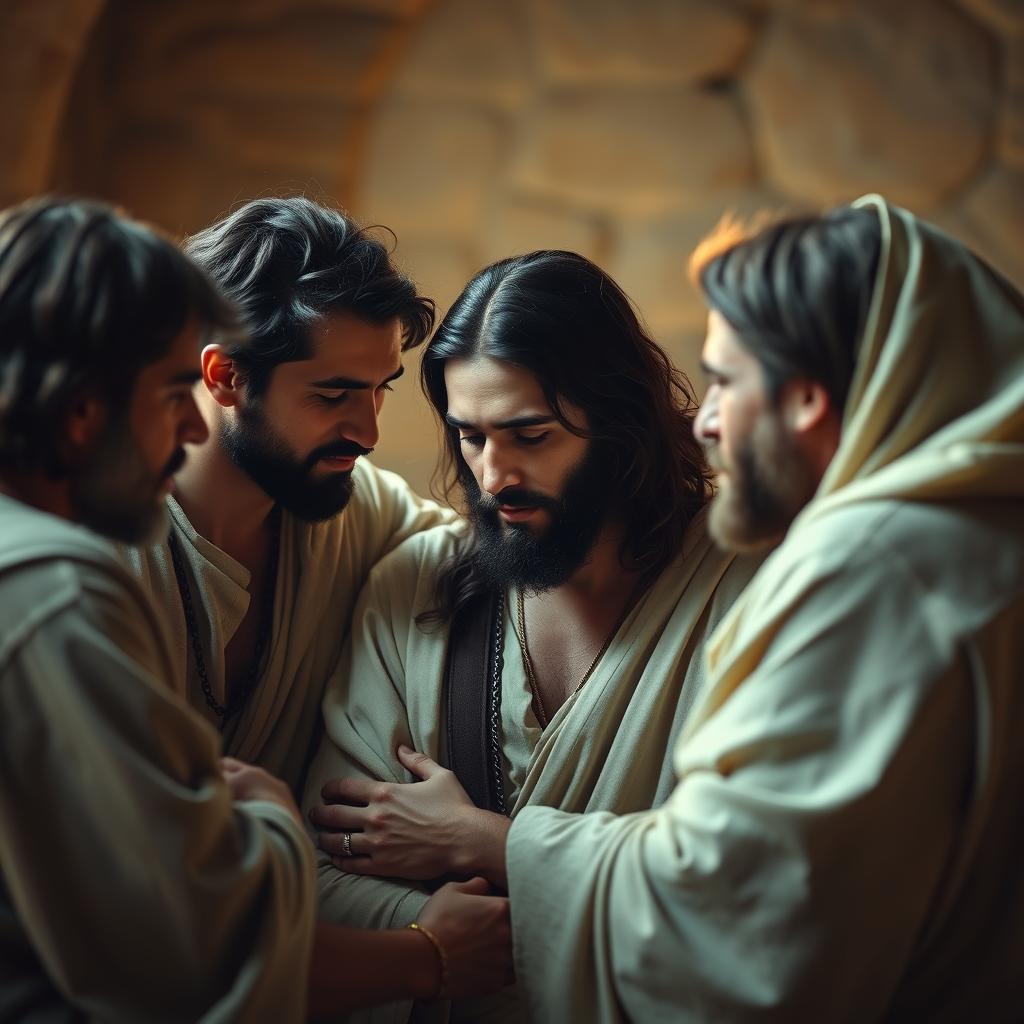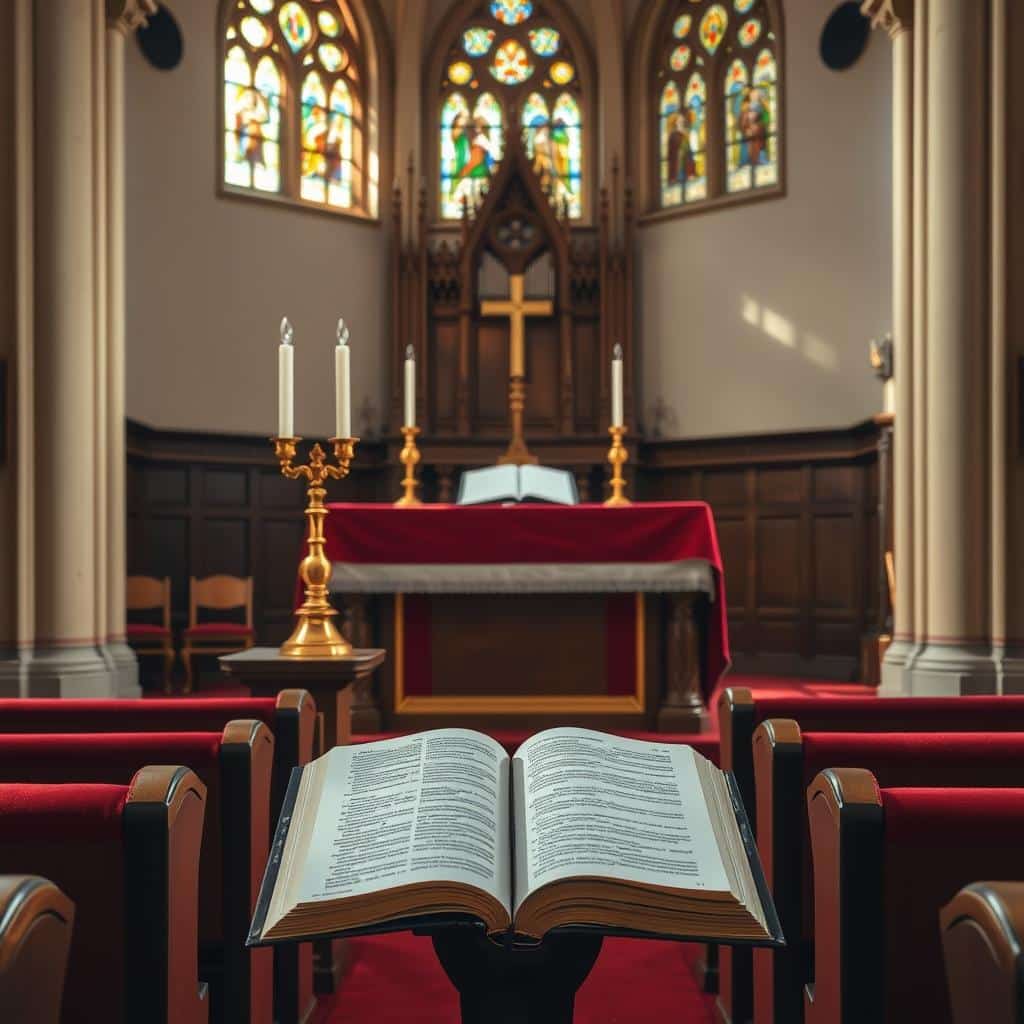As we celebrate the joy and responsibility that come with following Jesus, the readings for the Third Sunday of Easter in Cycle C offer profound spiritual insights.
These carefully selected readings illuminate the post-resurrection appearances of Jesus and their significance for our faith journey. The liturgical celebration occurs during the Easter season, a time of joy and reflection on Christ’s victory over death.
The readings form a cohesive narrative about witness, redemption, and our call to service, inviting us to deepen our love for Christ and commitment to his mission.
As we explore these sacred texts, we’ll discover how they speak to contemporary challenges and inspire us to live as Easter people in a world that desperately needs the hope that comes from knowing the Risen Lord.
Candle Making Made Easy: Create Stunning Decor with Our Guide
Understanding the Liturgical Context
Understanding the liturgical context is crucial for appreciating the readings of the Third Sunday of Easter. The Catholic Church’s liturgical calendar is rich in tradition and symbolism, guiding believers through the mysteries of Christ’s life, death, and resurrection.
The Easter Season in the Catholic Calendar
The Easter season, also known as Eastertide, is a period of fifty days beginning with Easter Sunday and ending with Pentecost Sunday. It is a time of great joy and celebration, as it commemorates the resurrection of Jesus Christ and the promise of eternal life. During this season, the Church focuses on the appearances of the risen Christ and the establishment of the early Christian community.
Significance of Cycle C Readings
In Lectionary Cycle C, the Sunday Gospels are typically taken from the Gospel of Luke, but during the Easter season, they are drawn from the Gospel of John. This shift emphasizes the unique theological insights into Christ’s resurrection provided by John. The Cycle C Easter readings create a progression that guides the disciples from the empty tomb to recognition, understanding, and finally mission, mirroring our own faith journey and touching our hearts by showing how ordinary people were transformed by their encounters with the risen Christ, offering us a way to relate to their experiences through the reading.
First Reading: Acts 5:27-32, 40b-41
The first reading from Acts 5:27-32, 40b-41 presents a pivotal moment in the early Christian church. The apostles, having been arrested and brought before the Sanhedrin, are charged with disobeying the authorities by continuing to preach about Jesus.
The Apostles Before the Sanhedrin
The apostles’ response to the Sanhedrin is one of courage and conviction. Peter, speaking on behalf of the group, declares that they must obey God rather than men. This statement becomes a defining principle for Christian ethics and moral decision-making.
As Peter notes, “We must obey God rather than men” (Acts 5:29). This principle challenges us to examine our ultimate allegiance and whether we have the courage to stand for truth when facing opposition.

Obeying God Rather Than Men
The apostles’ actions demonstrate their complete trust in God’s purposes, even when obedience leads to suffering and persecution. Their example reminds us that authentic faith often requires making difficult choices that may put us at odds with prevailing cultural norms or authorities.
The point is not defiance for its own sake, but rather a recognition that we need to align our lives with God’s higher purposes. This raises the question: What authorities compete for our obedience today? As we reflect on the apostles’ courage, we are inspired to make similar choices in our own lives, trusting in God’s plan and guidance.
“We gave you strict orders not to continue teaching in this name, yet you have filled Jerusalem with your teaching and are determined to make us responsible for that man’s blood.” (
)
Responsorial Psalm: Psalm 30:2, 4, 5-6, 11-12, 13
Psalm 30 serves as the Responsorial Psalm for the Third Sunday of Easter in Cycle C, offering a poignant reflection on God’s deliverance. This psalm is a song of thanksgiving, expressing the psalmist’s deep gratitude for being saved from distress. The themes of redemption and joy that permeate Psalm 30 resonate deeply with the Easter mystery, reminding us of the transformative power of God’s love.

A Song of Thanksgiving for Deliverance
The psalmist’s heartfelt prayer is a powerful expression of trust in God’s ability to transform sorrow into joy. The opening verses of Psalm 30 proclaim, “I will extol you, Lord, for you drew me clear and did not let my enemies rejoice over me.” This sentiment echoes the Easter experience, where Christ’s resurrection brings joy and salvation to believers.
The act of thanksgiving in the psalm is not just a personal expression but a communal acknowledgment of God’s redemptive power.
From Mourning to Dancing
One of the most striking images in Psalm 30 is the transformation of “mourning into dancing.” This metaphor captures the essence of the Easter season, where the darkness of Good Friday is transformed into the joy of Easter Sunday.
The psalmist writes, “You changed my mourning into dancing; you removed my sackcloth and clothed me with joy.” This transformation is not just a past event but a present reality for believers, who are called to live out the joy of the Resurrection in their daily lives, bringing hope and joy to all times.
As a prayer, Psalm 30 invites believers to bring their experiences of darkness and light before God, trusting in His power to transform their circumstances. It speaks directly to our hearts, encouraging us to turn to God in times of need and to trust in His deliverance.
Second Reading: Revelation 5:11-14
In Revelation 5:11-14, we are given a glimpse into the heavenly realm where worship is a cosmic event. This passage from the Book of Revelation is a profound moment in the liturgical readings for the Third Sunday of Easter, Cycle C. It underscores the theme of redemption and the universal praise that ensues from Christ’s sacrifice.
The Vision of Heavenly Worship
The vision presented in Revelation 5:11-14 is one of overwhelming adoration. The passage describes “every creature in heaven and on earth and under the earth” joining together in a chorus of praise to God and to the Lamb. This universal scope of worship emphasizes that God’s redemption extends to all creation, highlighting the cosmic impact of Christ’s sacrifice.

The Lamb Who Is Worthy
The central acclamation of this passage is that the Lamb who was slain is “worthy to receive power and riches, wisdom and strength, honor and glory and blessing.” This declaration affirms that Christ’s worthiness is rooted in his self-giving sacrifice, establishing a value system that is contrary to worldly expectations. As we praise God and reflect on this passage, we are reminded that our earthly reverence participates in heaven’s perfect adoration of the Lamb. Thus, we are encouraged to praise God with a deeper understanding of Christ’s divinity and redemptive love.
Gospel Reading: John 21:1-19
The Gospel Reading for the Third Sunday of Easter, Cycle C, presents a profound narrative from John 21:1-19, rich in symbolism and significance. This passage recounts Jesus’ appearance by the Sea of Galilee, where he performs a miraculous catch of fish and subsequently shares a meal with his disciples.

The Miraculous Catch of Fish
The narrative begins with Jesus appearing to his disciples by the Sea of Galilee. The disciples, having returned to their fishing occupation, catch nothing until Jesus instructs them to cast their net on the right side of the boat, resulting in a miraculous catch of 153 large fish. This event is reminiscent of the earlier calling of the disciples and signifies Jesus’ continued provision and guidance.
The catch of fish is symbolic, representing the disciples’ mission to gather people into the community of faith. It underscores the importance of obedience to Jesus’ instructions, as the disciples’ efforts on their own yield nothing, but following Jesus’ guidance results in abundance.
Peter’s Threefold Affirmation of Love
Following the meal, Jesus engages Peter in a poignant dialogue, asking him three times if he loves him. Peter, having denied Jesus three times during the Passion, is given the opportunity to reaffirm his devotion. Each time, Jesus responds by commissioning Peter to care for his flock, effectively reinstating him as a leader among the disciples.
This threefold affirmation not only restores Peter but also emphasizes the importance of love and commitment in discipleship. It serves as a powerful reminder that forgiveness and restoration are available to those who sincerely seek to follow Jesus.
The Call to “Feed My Sheep”
Jesus’ command to “Feed my sheep” transforms Peter’s role from that of a fisherman to a shepherd, establishing a new relationship between the risen Christ and his Church. This pastoral commission is not limited to Peter but extends to all disciples, challenging them to care for one another and to nurture the faith community.
As we reflect on this Gospel Reading, we are reminded of our own call to serve and care for others, embodying Jesus’ love in our actions and words. By doing so, we fulfill our mission as disciples and contribute to the growth and vitality of the faith community.
Key Themes of the Third Sunday of Easter, Cycle C
As we reflect on the Third Sunday of Easter, Cycle C, several key themes emerge that guide our understanding of the liturgical readings. These themes are intricately woven throughout the various texts, providing a rich tapestry of spiritual insights and directives for the faithful.

Witness and Testimony
The readings for this Sunday emphasize the importance of witness and testimony. In the first reading from Acts, the apostles stand before the Sanhedrin, boldly proclaiming their experience of Jesus Christ. This act of witnessing to the resurrection is a powerful testament to their faith and commitment.
Redemption and Restoration
Another significant theme is that of redemption and restoration. The Gospel reading from John 21, where Jesus appears to the disciples by the Sea of Galilee, underscores the restoration of Peter and the disciples after their failure. Jesus’ threefold question to Peter, “Do you love me?” followed by the command to “feed my sheep,” signifies a restoration of Peter’s role and a call to deeper love and service.
Service and Mission
The call to service and mission is a dominant theme, particularly in Jesus’ instruction to Peter to “feed my sheep.” This directive transforms the disciples from being mere recipients of the resurrection news to active participants in extending Christ’s ministry. It highlights that true discipleship involves both intimate communion with Jesus and outward mission, demonstrating that authentic faith always moves from encounter to engagement.
The Third Sunday of Easter, Cycle C, thus challenges us to embrace our role in the mission of Christ, to witness to the redemption we have experienced, and to serve others in love. By doing so, we fulfill our calling as disciples and contribute to the ongoing story of salvation.
Connecting the Readings: A Unified Message
On this Third Sunday of Easter, Cycle C, the Church invites us to ponder the profound links between the apostolic witness, heavenly worship, and the risen Christ’s presence among his disciples. The readings for today offer a rich tapestry of themes and imagery that together illuminate the path of faith and the nature of Christian community.

The Gospel reading from John 21, where Jesus appears to the disciples by the Sea of Galilee, provides a vivid scene of recognition and mission. Jesus’ preparation of bread and fish on a charcoal fire, and his invitation to the disciples to share their catch, echoes the miracle of the multiplication of the loaves and fishes. This Eucharistic imagery is a powerful connection between the disciples’ experience and our own participation in the Mass.
From Fear to Bold Proclamation
The transformation of the disciples from fear to bold proclamation is a key theme that runs through the readings. In the first reading from Acts, the apostles stand before the Sanhedrin, unflinching in their testimony to the resurrection. This courage is not born of their own strength but is a result of their encounter with the risen Christ. As we reflect on this, we are reminded that our own witness to Christ is empowered by our participation in the Eucharist and our willingness to serve others in His name.
The Eucharistic Connection
A profound connection among these readings is their Eucharistic imagery, which links the disciples’ experience to our own participation in the Mass. Jesus’ role as host at the meal by the shore, where he feeds the disciples bread and fish, echoes the Eucharistic celebration where Christ continues to feed his people. This thread reminds us that encountering the risen Christ is not merely a historical event but a present reality available to disciples in every age through the breaking of bread.
Living the Message in Daily Life
Embracing the teachings of the Third Sunday of Easter, Cycle C, means bringing its message into our daily experiences. The readings provide a clear call to action, emphasizing the importance of showing our love for Jesus through acts of kindness, support, and service to others. This understanding is rooted in Jesus’ conversation with Peter, where He emphasizes that true love for Him is demonstrated by caring for His sheep.
Personal Application of the Readings
To apply the readings personally, we must recognize that our actions reflect our love for Jesus. This involves being mindful of how we treat those around us and making a conscious effort to help and support others. By doing so, we live out His command to love, using our time to make a positive impact in the lives of people.
Practical Ways to “Feed His Sheep”
Feeding Christ’s sheep can take many forms in our daily life. It includes acts of mercy, such as feeding the hungry and comforting the afflicted. Simple actions like being fully present in conversations can show Christ’s love in action. We can also volunteer, mentor, visit the elderly, or advocate for the marginalized. In our families, it means creating meaningful connections and practicing patience. In our professional lives, it involves bringing integrity, compassion, and excellence to our work as expressions of our love.

Prayer and Reflection for the Third Sunday of Easter
On this Third Sunday of Easter, we are encouraged to open our hearts to the risen Christ who continues to reveal Himself to us in unexpected ways and places. The readings for this Sunday invite us to reflect on our response to Jesus’ question, “Do you love me?” and His command to “feed my sheep.”
As we pray, we ask for the courage of the apostles who rejoiced in suffering for Christ’s name, the trust of the psalmist who experienced God’s deliverance, and the vision of John who glimpsed heaven’s worship. Our prayer is not separate from action but leads naturally to mission and service as expressions of our love for Christ.
Let us pray with the words: Loving Father, Open our eyes to see your Son who rose from the dead and opened for us the bright promise of immortality. May we bear witness to his life, death, and resurrection in this Easter Season and throughout our lives. Grant this Christ our Lord. Amen. May our prayer be filled with joy that transcends circumstances, love that expresses itself in service, and faith that recognizes Christ’s presence in both the extraordinary and ordinary moments of life.
FAQ
What is the significance of the miraculous catch of fish in the Gospel reading for the Third Sunday of Easter?
The miraculous catch of fish symbolizes the disciples’ mission to spread the word of God and serves as a reminder of Jesus’ power and provision in their lives.
How does the call to “Feed my sheep” relate to our daily lives?
The call to “Feed my sheep” is a reminder of our responsibility to care for and nurture others in our community, sharing the love and message of Jesus with those around us.
What is the connection between the readings and the theme of witness and testimony?
The readings emphasize the importance of witnessing to the love and redemption of Jesus Christ, and the need to proclaim this message boldly to others.
How can we apply the message of the readings to our personal lives?
We can apply the message by living out our faith in our daily actions, trusting in God’s provision and care, and sharing His love with others through our words and deeds.
What is the significance of Peter’s threefold affirmation of love for Jesus?
Peter’s threefold affirmation of love is a powerful expression of his commitment to Jesus, and serves as a reminder of the importance of expressing our love and devotion to God.
How does the Eucharist connect to the readings for the Third Sunday of Easter?
The Eucharist is a celebration of the love and redemption that is at the heart of the readings, and serves as a source of nourishment and strength for our mission to “Feed His sheep.”





